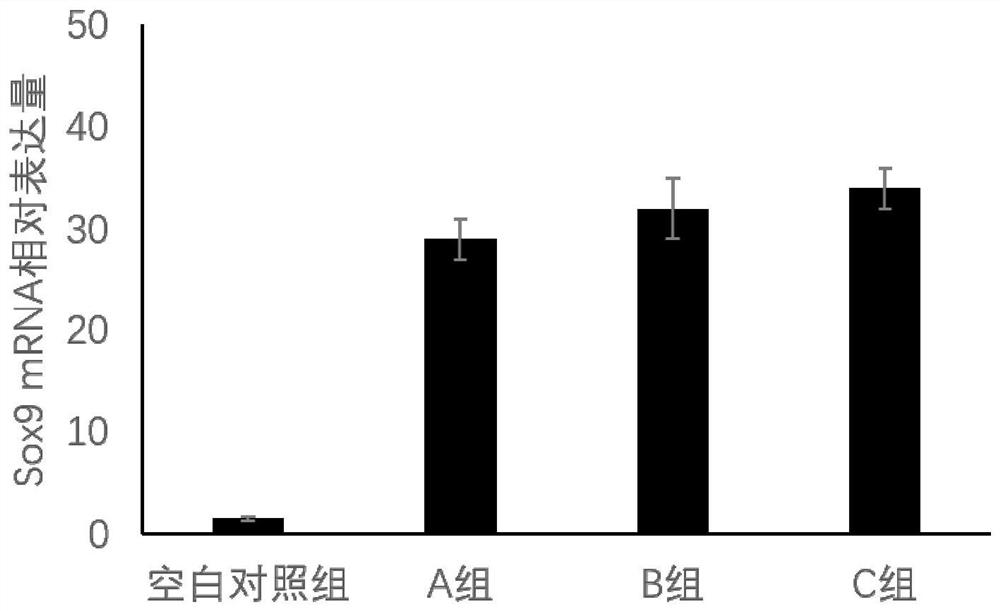A kind of stem cell cryopreservation medium
A technique for cryopreservation and stem cells, applied in the biological field, can solve the problems of inactive cells, insufficient types, and insufficient types of Caspase inhibitors, so as to improve the survival rate, have good application value, and facilitate preservation and application.
- Summary
- Abstract
- Description
- Claims
- Application Information
AI Technical Summary
Problems solved by technology
Method used
Image
Examples
Embodiment 1
[0022] The preparation of embodiment 1 Caspase monoclonal antibody
[0023] Animal immunization: 5 mg of purified recombinant human Caspase-3 protein (BioVision, Cat. No. 1083-5) was fully mixed with an equal volume of Freund's complete adjuvant, and BALB / c mice were subcutaneously injected with 50 μg of the fusion protein at multiple points. 4 weeks after the initial immunization, multi-point subcutaneous injections were given on the back to boost the immunization, and 4 weeks later, the immunization was boosted again, each time using 50 μg of immunogen per mouse. 8-10 days after the third immunization, blood was collected from the tail vein to measure the serum antibody titer by ELISA. Four days before fusion, a mouse with the highest antibody titer was selected for booster immunization by intraperitoneal injection of 150 μg antigen without adjuvant. Cell fusion and screening: Aseptically take splenocytes from BALB / c mice for booster immunity, use 50% polyethylene glycol as...
Embodiment 2
[0037] Example 2 Cryopreservation experiment of umbilical cord mesenchymal stem cells
[0038] The cells were divided into three groups, and the following 3 different compositions of cryopreservation solutions were added respectively (the formulas in each group are in volume ratio).
[0039] Group A uses cryopreservation solution (mixed by IMDM medium, fetal bovine serum and dimethyl sulfoxide at 7:2:1)
[0040] Adjust cell density to 1x10 5 / ml, stored in liquid nitrogen according to the following procedure: 15 min at 4°C, 2 h at -20°C, overnight at -80°C, and finally frozen at -196°C. After the cells were frozen at -196°C for 4 weeks, they were immediately placed in a water bath at 40°C, thawed within 2 minutes, and washed with IMDM medium for later use (conventional cryopreservation group).
[0041] B Use cryopreservation solution (mixed by IMDM medium, fetal calf serum and dimethyl sulfoxide at 7:2:1, add zVAQ-fmk (30 μmol / L) to adjust the cell density to 1×10 5 / ml, st...
Embodiment 3
[0047] Induction and differentiation experiment of cells after cryopreservation in embodiment 3
[0048] Induced differentiation of umbilical cord blood mesenchymal stem cells into chondrocytes: Three groups of resurrected cells were taken after cryopreservation, and the density was 5X10 7 L- 1 Inoculate in a 24-well culture plate (with a sterile cover glass built into the well), and change the medium on the second day, and half of the culture wells are used to induce chondrocyte culture medium (DMEM with 15% fetal bovine serum, containing a final concentration of 100pg / L insulin Like growth factor 1) for culture, change the culture medium once every 3 days, and induce for 12 days.
[0049] Collect the cell clusters of chondrogenic induction 12 days respectively, aspirate and discard the medium, wash lightly twice with PBS, add an appropriate amount of RNAisoplus, and blow and beat repeatedly to fully lyse the cells. cDNA was synthesized by reverse transcription after extrac...
PUM
 Login to View More
Login to View More Abstract
Description
Claims
Application Information
 Login to View More
Login to View More - R&D
- Intellectual Property
- Life Sciences
- Materials
- Tech Scout
- Unparalleled Data Quality
- Higher Quality Content
- 60% Fewer Hallucinations
Browse by: Latest US Patents, China's latest patents, Technical Efficacy Thesaurus, Application Domain, Technology Topic, Popular Technical Reports.
© 2025 PatSnap. All rights reserved.Legal|Privacy policy|Modern Slavery Act Transparency Statement|Sitemap|About US| Contact US: help@patsnap.com



